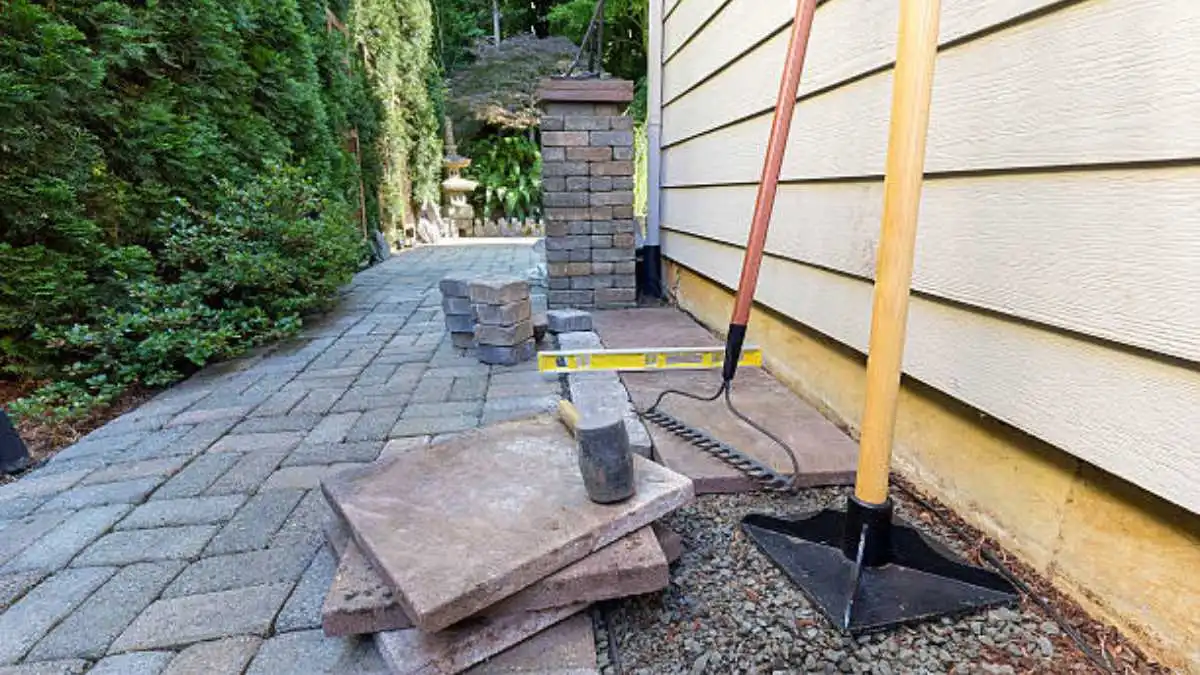HOME IMPROVEMENT
What to Consider Before Installing Patio Pavers: A Practical Guide for Homeowners

Introduction
Adding a patio to your outdoor space is one of the most rewarding upgrades you can make as a homeowner. Whether you’re creating a space for entertaining, relaxing, or dining under the stars, the material and design you choose lay the foundation—literally and visually—for how the space functions and feels. Among the most popular options, patio pavers stand out for their durability, flexibility, and wide range of design choices.
But before you start selecting colors or planning a pattern, there are several important factors to consider. Installing patio pavers isn’t just about the aesthetic—it’s also about preparing your space for functionality, drainage, maintenance, and long-term satisfaction. Knowing what to expect before the project begins can help you make better decisions and avoid common pitfalls.
Horizon Outdoors works with homeowners to design and install outdoor living spaces that bring together form and function. If patio pavers are in your future, this guide covers the key decisions and planning steps you’ll want to make before installation begins.
Table of Contents
Evaluate the Purpose of the Space
Before selecting materials or layout options, think about how the space will be used. A patio designed for dining has different requirements than one created for lounging or as a decorative pathway.
Key Use Considerations:
- Size and Seating: How many people will typically use the space? Make sure your patio is large enough to accommodate furniture without crowding.
- Traffic Flow: Will this be a central area for moving between parts of the yard? Pathways and transitions should be seamless.
- Shade and Sunlight: Understanding how the sun moves over your property can help you decide on the placement and even influence material selection to avoid heat retention.
The answers to these questions will influence not only the layout but also the specific type of patio pavers and the overall hardscaping plan.
Choose the Right Paver Material
There are many types of patio pavers to choose from, and each has its pros and cons. The best material depends on your goals for appearance, durability, maintenance, and budget.
Common Paver Materials:
- Concrete Pavers: Widely available, affordable, and available in many shapes and colors. Suitable for most residential applications.
- Natural Stone: Offers a high-end look with unique color and texture variations. Best for projects where aesthetics are a top priority.
- Clay Brick Pavers: Traditional and long-lasting, with a classic look. Ideal for historic homes or when a timeless aesthetic is desired.
- Porcelain Pavers: Increasingly popular for modern spaces. They’re resistant to moisture and staining but require proper installation on a solid base.
It’s also worth considering how the pavers will complement the landscaping and other hardscaping elements already on your property.
Understand Site Conditions and Soil Type
Not every yard is immediately ready for a paver patio. Site conditions—especially soil composition and grading—can significantly affect both the difficulty and cost of installation.
What to Check:
- Soil Drainage: Clay-heavy soil retains water and may require more base material to prevent settling. Sandy soil allows for quicker drainage but may shift more easily.
- Grade and Slope: A level surface is ideal, but slight grading away from your home is necessary to ensure water runoff doesn’t flow toward your foundation.
- Access and Obstacles: Consider nearby trees, roots, irrigation systems, and utilities that could complicate excavation or require relocation.
Landscaping experts in Dauphin County will assess these conditions as part of the planning process, ensuring the final result is both beautiful and structurally sound.
Consider Drainage and Water Management
One of the most overlooked parts of installing patio pavers is ensuring proper water management. Without a drainage plan, water can pool on your patio, damage pavers, or cause erosion around the edges.
Drainage Solutions May Include:
- Permeable Pavers: These allow water to pass through the gaps and into a gravel base, reducing surface runoff.
- Slope Design: A gentle grade (usually about 1/4 inch per foot) directs water away from buildings and walkways.
- Drain Channels or French Drains: In some cases, additional drainage systems are needed to move water away efficiently.
Incorporating good drainage design upfront will preserve the integrity of your pavers and reduce maintenance over time.
Think About Long-Term Maintenance
While patio pavers are relatively low-maintenance compared to other materials, they do require periodic upkeep to stay in top shape.
Maintenance Tips:
- Sealing: Depending on the material, pavers may benefit from sealing every few years to prevent staining and protect against moisture.
- Joint Sanding: Polymeric sand between pavers may need to be refreshed to keep weeds and ants out of the joints
- Leveling: Pavers may shift slightly over time. A professional hardscaping contractor can re-level sections if needed.
Understanding these requirements ahead of time can help you budget and plan for the future care of your patio.
Factor in Permits and HOA Rules
Depending on where you live, you may need to secure a permit before installing a new patio—especially if it alters drainage, grading, or is attached to your home. Homeowners associations may also have rules about materials, size, or color palettes.
Before You Begin:
- Check local zoning codes
- Inquire about property line setback requirements
- Submit design plans for HOA approval, if applicable
A professional landscaping company can assist with navigating the permitting process to ensure everything is compliant before work begins.
Plan the Edging and Transition Zones
The edge of your patio deserves just as much attention as the center. A well-designed transition helps the patio blend into the surrounding landscaping and creates visual continuity.
Popular Options:
- Decorative Stone Borders: Frames the patio and provides contrast.
- Ground Cover or Mulch Beds: Softens the edge and supports adjacent planting areas
- Retaining Walls or Seat Walls: Adds functional seating and can double as a visual boundary.
These small design decisions go a long way toward making the space feel intentional and cohesive.
Don’t Forget Lighting and Accessories
Once the structural aspects are in place, consider what you’ll need to make the space usable after dark. Built-in lighting, planters, and even fire features can elevate a simple patio into a full outdoor living area.
Lighting options include:
- Low-voltage path lighting
- Recessed lights in step treads or borders
- String lighting for ambiance
- Uplighting around trees or walls
Think about how your patio will be used at different times of day and plan accordingly during the design phase.
Horizon Outdoors helps homeowners design spaces that combine practical layout with personalized details—ensuring patio pavers don’t just serve a function, but contribute to an enjoyable lifestyle.
Conclusion
Installing patio pavers can dramatically enhance your outdoor space—but getting it right requires careful planning and attention to detail. From choosing the right material and understanding site conditions to planning drainage, maintenance, and aesthetics, every decision contributes to the success of the project.
By addressing these factors early, homeowners can ensure their investment looks great, performs well, and lasts for years to come. Whether you’re starting from scratch or upgrading an existing space, the right preparation makes all the difference.
Horizon Outdoors brings experience, precision, and vision to every project, helping you create a patio that’s not only functional, but a lasting feature of your landscape.
-

 GENERAL2 months ago
GENERAL2 months agoUncovering the World of кинокрадко: The Dark Side of Film Piracy
-

 GENERAL1 month ago
GENERAL1 month agoUnveiling the Art of преводсч: How Translators Bridge Language Barriers
-

 YOGA1 year ago
YOGA1 year ago4 Person Yoga Poses for Beginners
-

 GENERAL2 months ago
GENERAL2 months agoThe Journey of iamnobody89757: From Anonymous User to Internet Sensation


























